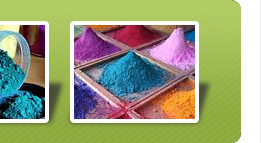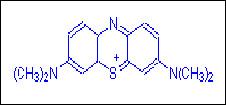Are Basic Dyes Positively Charged

Home![]() Profile
Profile ![]() Production Range
Production Range![]() Industries
Industries![]() Infrastructure
Infrastructure![]() Our Quality
Our Quality![]() Custom Manufacturing
Custom Manufacturing![]() Network
Network![]() Contact U.s.a.
Contact U.s.a.![]() Ship Research
Ship Research



Basic Dyes
Basic dye is a stain that is cationic (+ve charged) and and so volition react with material that is (-ve) negatively charged. This dye is normally synthetic, that act as bases, and which are actually aniline dyes. Their color base is not h2o soluble but can be made then by converting the base of operations into a table salt. The basic dyes, while possessing swell tinctorial strength and brightness, are not generally lite-fast.
At the chemical level, basic dyes are typically cationic or positively charged. Basic dyes display cationic functional groups like -NR3+ or =NR2+. Since bones dye is a stain that is cationic or positively charged and it is the reason that information technology reacts well with material that is anionic or negatively charged.
Basic dyes consists of amino groups, or alkylamino groups, equally their auxochromes. Synthetic dye that was discovered past Perkin incidentally was a bones dye. Few examples of bones dyes are the following, methylene blue, crystal violet, basic fuchsin safranin, etc. An example of a basic dye that has amino groups as their auxochrome is pararosanilin or basic carmine 9 (co-ordinate to the strict colour alphabetize arrangement of nomenclature) example of alkylamino groups is methylene blue or bones blue 9. Basic Blueish 9 is a very popular dye that has vast use. Table given below provides more information about Basic Blueish ix:
| Mutual name | Methylene Blueish |
| Other name | Methylene Blueish |
| Suggested name | Swiss blueish |
| C I proper noun | Bones bluish 9, Solvent bluish 8 |
| C I number | 52015 |
| Ionisation | Thiazin |
| Solubility aqueous | 3.55% |
| Solubility ethanol | 1.48% |
| Course | Basic |
| Colour | Blue |
| Empirical formula | C16HeighteenN3SCl |
| Formula weight | 319.9 |
 A basic chemical structure of Basic Blue 9
A basic chemical structure of Basic Blue 9
Advantages of Bones Dyes
- Moderate substantivity
- Relatively economical
- Loftier Tinctorial strength
- Broad shade range
- Shows practiced brightness
- Includes some of the most bright synthetic dyes
Limitations of Basic Dye
- Loftier acid content
- Colored backwaters
- Poor shade stability
- Preferential dyeing
- Very poor calorie-free fastness
Modified Basic Dye
Modified basic dyes have similar chemistry, as of basic dyes. These but evidence a bit longer molecular structures than the typical conventional bones dyes, thus resulting in significantly improved properties.
Central advantages over conventional bones dyes:-
- Better Lightfastness
- Clear backwaters
- Covers all fibres
- Splendid substantivity
Awarding of the Basic Dyes
Basic dyes are extensively used for dyeing of jute, cut flowers, dried blossom, coir, etc. For dyeing Acrylic Fibres, basic dyes are used widely. Modified bones dyes are used for dyeing of Acrylic Fibre, because these are perfect for this fabric. If the reason behind the success of Basic dyes is analysed, information technology would be seen that the positively charged cations of the Basic dyes gets attracted towards the negatively charged anions in the acrylic fibre. Acylic polymers take anionic groups attached to information technology. They are most commonly the sulphonate group, -SO3-, followed closed by the carboxylate group, -CO2-. This reaction of the cation and anion results in table salt linkages. Basic dye practice not show admittedly whatsoever migration in acrylic fibers under normal dyeing conditions.
Bones dyes are as well preferred to dye leather, because they can go combined hands with vegetable-tanned leather thus doing away with mordant. Bones dyes are too used in the coloring of papers.
Home![]() Contour
Contour ![]() Product Range
Product Range![]() Industries
Industries![]() Infrastructure
Infrastructure![]() Our Quality
Our Quality![]() Custom Manufacturing
Custom Manufacturing![]() Network
Network![]() Contact The states
Contact The states![]() Send Enquiry
Send Enquiry
Are Basic Dyes Positively Charged,
Source: https://www.dyes-pigment.com/basic-dyes.html
Posted by: harrisonexpleseeptes.blogspot.com


0 Response to "Are Basic Dyes Positively Charged"
Post a Comment